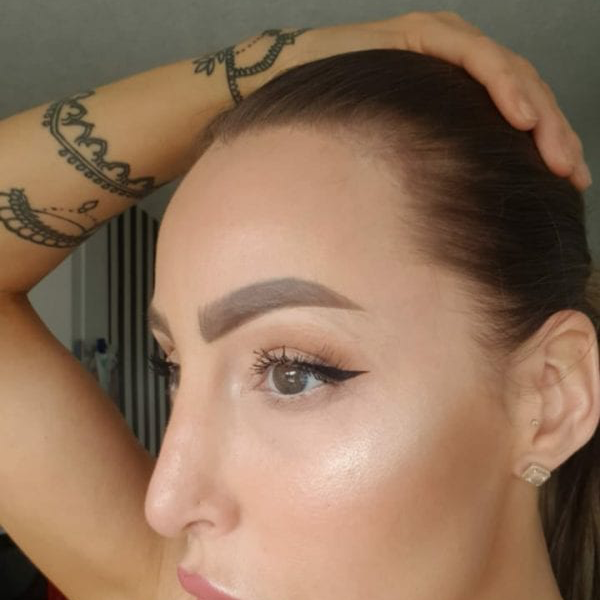Platelet Rich Plasma (PRP)
Blood, in addition to red and white blood cells contains platelets, rich in growth factors and are the most potent healers of the body.
What is PRP?
PRP stands for platelet rich plasma. Your blood contain platelets which are rich in growth factors and are known as the most potent healers within the human body. These growth factors are naturally occurring substances within the body which are capable of stimulating cell growth which in turn helps to promote healing by helping to restore the normal architecture and strength within the tissue. During a PRP injection, the clients own blood is processed at high speed within a centrifuge to remove the red blood cells, which results in a higher concentration of the client owns platelets than whole blood, and is then injected into the scalp to promote local healing, increase blood flow and aid in stimulating hair follicles to grow stronger and healthier.
Is PRP new?
PRP treatments and the technology involved with them has been used for years for both surgical reason and caring for wounds, initially it was used to aid with healing following open heart surgery in Italy in the 1970’s. During the 1990’s the treatment gained popularity and started to be used within other medical and surgical areas such as cosmetic surgery, dentistry and pain management. However, the use of PRP for the scalp and hair loss treatments is a fairly new process and is evolving into a very promising treatment to aid with the healing following a hair transplantation and also as a way to aid in reversing hair loss. It is generally accepted that there is a significant response of approximately 75% to PRP treatments within certain areas of the body, though this data is based on multiple studies using small target groups.
Whenever we administer this kind of treatment, we observe responses from 3-5 years following one dose of the treatment. In advance hair loss cases, we have also found that performing an additional follow-up treatment around 12-15 months after the first has increased value and builds upon the first treatment. PRP treatments are backed by clinical data from hundreds of patients worldwide which shows that it aids with stopping hair loss, thickens existing hair and also aids in further hair growth.
How is PRP used to treat hair loss?
Individual results and treatments vary with each patient, however based on the anecdotal reports of our colleagues and from our own work, we inject the PRP into the scalp following anaesthetisation in areas that are experiencing thinning or in some worse cases, the falling out of hair. We then recommend a follow up repeat therapy after approximately five weeks and then again once a year if it is still required. It can be used to treat hair loss as a non-surgical application and also during surgery to ensure and maximise the follicle health, strength and viability of the transplanted follicles.
The benefits of PRP are incredible in clients that are experiencing hair loss as it is used to treat this hair loss by stimulating and strengthening hair follicles, promoting the growth of new hair to increase the hair density and thickness in the area where the hair is diminishing.
Do I have to worry about the use of blood products?
There is no worry about transfusion risks as your own blood is used for the entire process.
What do I have to do prior to and after having the procedure?
Prior to the PRP treatment procedure, all patients should avoid all anti-inflammatory medications for seven days. This includes and prescription anti-inflammatory medication in addition to any over the counter medication such as paracetamol (cardiac patients are still permitted and advised to continue to take aspirin). Any patients using blood thinners such as Coumadin, Warfarin, Plavix or Pradaxa are not candidates for PRP treatments due to the effect that these medications have on the blood. Following the procedure, we advise continuing to avoid these medications for the next 3 days, however otherwise you are fine to continue with your normal everyday life.
What can I expect during the procedure?
Using sterile equipment, we will draw approximately 120cc of blood from the vein of the patient and this is placed is a special test tube to be centrifuged. The centrifuge process separates the platelet rich white blood cells from the whole blood and while this process is occurring, the scalp will be anaesthetised. The baseline blood platelet count is approximately 200,000 per litre of blood, however the separation process concentrates this count which increases the growth factors contained within. Once the centrifuge process is completed, it takes several minutes to inject the PRP into the areas of the scalp to be treated and it is then activated by treating the scalp with a roller or tiny needles that press hundreds of tiny microdots into the areas experiencing hair loss to stimulate the growth of the follicles.
Complications/Risks:
As with any procedure, there are risks however with this procedure specifically there are very few risks and all are incredibly rare. These can include temporary bruising in the area that the blood was drawn from or the area in which the PRP was injected and in rare cases, a temporary worsening of hair loss. Following the procedure, any mild discomfort or headache can be treated effectively and simply with paracetamol.






Get your free consultation
If you feel that you could benefit from one of our revolutionary hair loss treatments and would like to schedule a consultation with us, please let us know using the form below!

